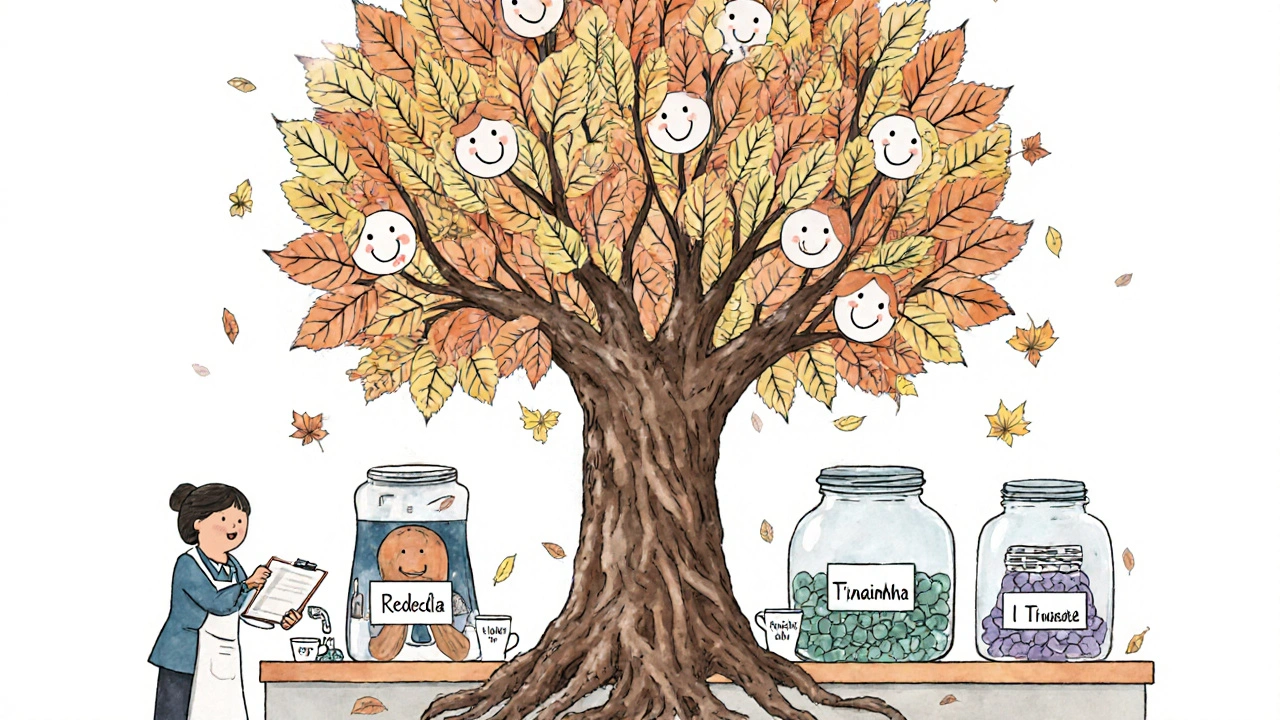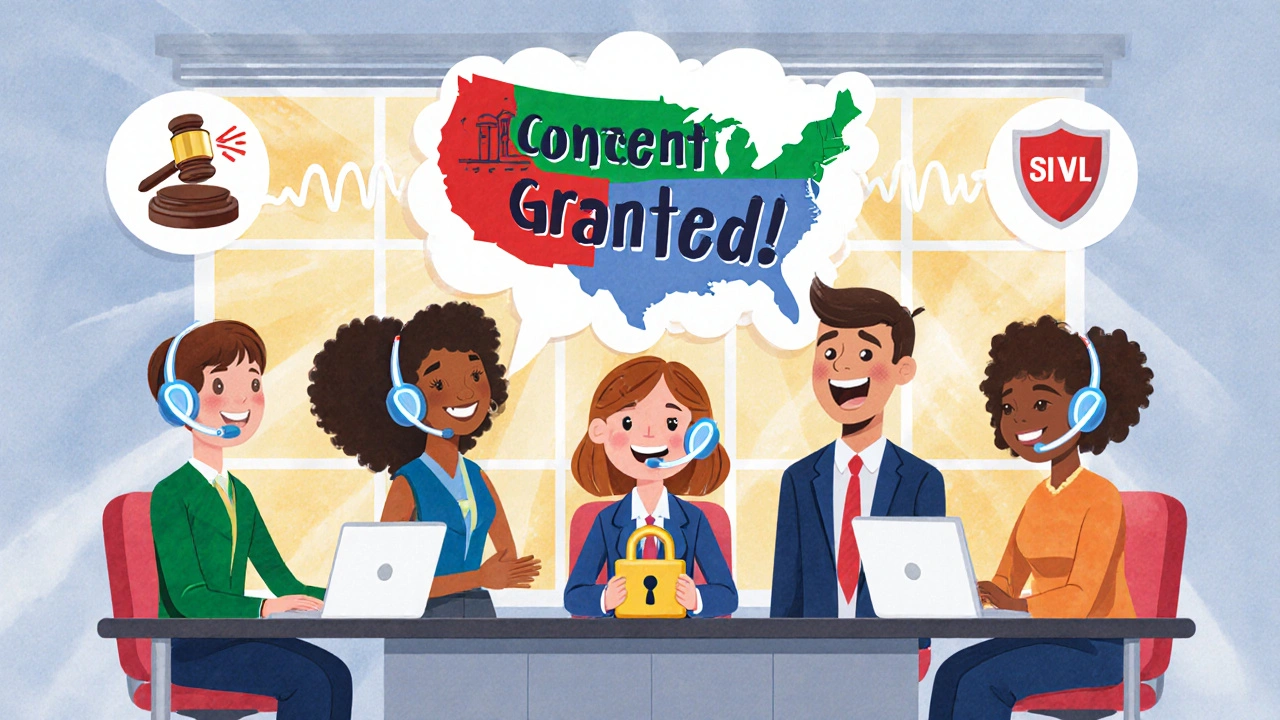Every call your contact center records could be a legal risk-or a golden opportunity to train agents, fix service gaps, and build customer trust. It’s not just about saving conversations. It’s about following the law while making your team better. And the rules aren’t simple. They change by state, by industry, and even by the type of call. If you’re not handling this right, you’re exposing your business to fines that can hit over $1,500 per violation-and those add up fast.
Why Call Recording Isn’t Optional Anymore
Call recording used to be a nice-to-have. Now, it’s mandatory for most serious contact centers. The reason? Regulations. The Telephone Consumer Protection Act (TCPA), HIPAA, PCI DSS, and GDPR don’t just suggest recording-they require it under certain conditions. For example, if you handle credit card payments, PCI DSS demands you record transactions to prove no sensitive data was exposed. If you’re in healthcare, HIPAA says you must keep recordings of patient conversations for six years. And if you’re calling someone in California, you need their explicit consent before recording-even if you’re based in Texas.
Here’s the reality: 92% of contact centers now record every single call, according to Amplifai’s 2024 survey. Why? Because not recording is riskier than recording. Without recordings, you can’t prove you followed consent rules. You can’t train agents using real examples. And you can’t defend yourself if a customer files a complaint or lawsuit.
The Legal Minefield: One-Party vs. Two-Party Consent
Not all states treat call recording the same. In 38 U.S. states, only one person needs to know the call is being recorded-usually the company. That’s called one-party consent. But in 12 states-including California, Washington, Illinois, and Pennsylvania-you need all parties to agree. That’s two-party (or all-party) consent.
Ignoring this difference is how companies get hit with massive penalties. In 2023, a regional bank in California settled a class-action lawsuit for $1.8 million because they recorded calls without telling customers they were in a two-party state. The case was based on the 2006 Kearney v. Solomon Smith Barney ruling, which made it clear: if the caller is in California, you must get consent-even if your system is based elsewhere.
It’s not just about location. If your system detects a caller’s area code or IP address and doesn’t adjust the consent script in real time, you’re already non-compliant. Modern platforms use geolocation and AI to detect where the caller is and play the right warning: “This call may be recorded for quality purposes” for one-party states, and “We need your permission to record this call” for two-party states.
What Data Must Be Redacted-and Why
Recording a call isn’t enough. You have to protect the data inside it. PCI DSS Section 3.3 bans storing CVV codes. Section 3.4 says you can’t keep full credit card numbers unless they’re encrypted and masked. HIPAA forbids recording any protected health information (PHI) unless it’s necessary and securely stored. GDPR says you can’t keep personal data longer than needed.
Manual redaction? Forget it. Humans miss things. A 2023 MIT study found that manual redaction misses sensitive data in 37% of cases. That’s why top systems use AI to automatically scan and remove 16+ data types in real time: credit card numbers, Social Security numbers, medical IDs, driver’s licenses, even full names in some cases.
For example, a call center handling insurance claims might record a conversation where a customer says: “My policy number is 12345-ABC, and I had surgery last week at St. Mary’s Hospital.” The system doesn’t just mute the audio-it removes the entire phrase and replaces it with [REDACTED], then logs the action for audit purposes. No human needs to listen to that part. No risk of accidental exposure.

Integration Isn’t Optional-It’s Essential
A recording system that doesn’t talk to your CRM is a dead end. If your agent’s call isn’t linked to the customer’s file in Salesforce, Service Cloud, or Genesys, you lose context. You can’t tag calls for quality review. You can’t tie compliance failures to specific agents. You can’t measure improvement over time.
Enterprise systems today must integrate seamlessly with:
- Salesforce Service Cloud (used by 47% of large contact centers)
- Amazon Connect (28% market share)
- Genesys Cloud (15% adoption)
Without these integrations, your recording data is stuck in a silo. You might have perfect recordings-but no way to use them to improve service, coach agents, or prove compliance during an audit.
Also, your system must handle at least 1,200 concurrent calls with less than 200ms delay. If the recording causes lag, echo, or dropped calls, customers notice-and they leave. Uptime needs to be 99.995% or higher. That’s not a suggestion. It’s a requirement for financial institutions and healthcare providers.
Consent Management: The Biggest Gap
The most common reason for TCPA lawsuits? Poor consent documentation. In 68% of class-action suits, companies couldn’t prove they got proper consent. That’s because many still rely on static scripts or paper logs. If a customer says “yes” over the phone, but your system doesn’t capture and timestamp it, you have no proof.
Advanced platforms now use voice biometrics and AI to detect consent automatically. NICE’s CXone, for example, captures consent with 99.8% accuracy by analyzing tone, pauses, and verbal confirmation. If a customer says, “Go ahead,” the system flags it as consent. If they say, “I don’t want you to record this,” it stops immediately and logs the refusal.
This isn’t science fiction. It’s standard in top-tier systems. And the difference is huge. Contact centers that use automated consent management see a 73% drop in compliance violations, according to Observe.AI’s 2023 study.

Implementation: What It Really Takes
Don’t think you can plug in a recording system in a weekend. Enterprise deployments take 8 to 12 weeks. Successful ones follow four phases:
- Jurisdictional mapping - List every state and country your callers are from. Know which laws apply.
- Consent workflow design - Build dynamic scripts that change based on caller location. No one-size-fits-all.
- Technical integration - Connect to your phone system, CRM, and security protocols. AES-256 encryption is non-negotiable.
- Continuous monitoring - Use AI to scan recordings for redaction errors, consent gaps, or policy violations. Assign a compliance team.
Most teams fail at phase two. They think, “We’ll just use one script for everyone.” That’s how you end up recording a California resident without consent. Or storing a Social Security number when you shouldn’t.
You also need staff training. In 82% of negative reviews for recording platforms, managers blamed poor agent training. Agents need to know when to pause, when to ask for consent, and how to handle refusals. A 2024 Sprinklr survey found that 78% of integration issues came from legacy phone systems that didn’t support modern recording features.
The Cost of Getting It Wrong
The average cost of a non-compliance penalty for a mid-sized contact center is $2.1 million per year, according to Gartner. That’s not a typo. It includes:
- TCPA fines: $500-$1,500 per violation
- HIPAA penalties: $1.27 million average per incident
- GDPR fines: Up to 4% of global revenue
- Legal fees, reputational damage, customer churn
And it’s getting worse. In 2023, 28 U.S. states passed new privacy laws. By 2025, 43 states will have active call recording regulations. The FCC’s new rules in September 2023 even extended TCPA liability to AI-generated voice calls-meaning if you use synthetic voices to reach customers, you now need explicit consent for those too.
Meanwhile, the European Commission’s AI Act, rolling out in January 2025, will require contact centers to record and log every decision made by AI during customer interactions. That’s 28 million calls per month in the EU alone that now need documentation.
What You Should Do Right Now
Stop thinking of call recording as a tech project. Think of it as a compliance and quality engine. Here’s your checklist:
- Map every jurisdiction you serve and know the consent rules.
- Choose a system with real-time, AI-powered redaction for PCI, HIPAA, and GDPR data.
- Integrate with your CRM. No exceptions.
- Implement automated consent capture with voice biometrics.
- Train every agent on consent, redaction, and when to escalate.
- Assign a compliance officer. At least 1.2 FTE per 100 agents.
- Test your system monthly with real call samples. Look for redaction failures.
Companies that treat this as a strategic advantage don’t just avoid fines. They use recordings to coach agents, spot service breakdowns, and even improve products. One retail contact center found that 12% of calls revealed customers were confused about a product feature. They fixed the website-and saw a 22% drop in returns.
This isn’t about fear. It’s about control. Recordings give you visibility. And visibility gives you power-to protect your business, improve your team, and earn customer trust.
Is it legal to record calls without telling the customer?
No, not in all states. In 12 U.S. states-including California, Washington, and Illinois-you must get explicit consent from all parties before recording. In the other 38, one-party consent is enough, meaning your company can record if at least one person (like the agent) knows. But even in one-party states, best practice is to always inform the customer. Failing to do so can still lead to lawsuits under unfair business practices laws.
What happens if I don’t redact credit card numbers from recordings?
You violate PCI DSS Section 3.4, which prohibits storing full card numbers unless encrypted and masked. Penalties start at $5,000 per month for non-compliance and can escalate to $100,000+ if a breach occurs. Credit card brands like Visa and Mastercard can also terminate your ability to process payments. Automated redaction isn’t optional-it’s a requirement for any business handling payments.
Do I need to record every call?
Not legally required in all cases, but strongly recommended. For financial services, healthcare, and telecom, recording 100% of calls is often mandated by regulation or industry standards. Even if not required, recording everything gives you full visibility for quality control, dispute resolution, and compliance audits. Most top contact centers record everything to avoid gaps in evidence.
How long should I keep call recordings?
Retention periods vary by regulation: TCPA requires 24 months for consent records, HIPAA requires 6 years for healthcare-related calls, and GDPR says you must keep data only as long as needed for the purpose. Many companies keep recordings for 7 years to cover all bases. After that, they securely delete them. Never keep recordings longer than required-you increase your liability.
Can I use AI to automatically review call recordings for quality?
Yes, and it’s becoming standard. AI tools like Observe.AI and NICE CXone analyze tone, keywords, response time, and compliance flags across thousands of calls. They can identify which agents need coaching, which scripts are causing confusion, and which calls have compliance risks-all without human listening. These systems reduce quality review time by up to 80% and improve agent performance faster than manual methods.
What’s the biggest mistake companies make with call recording?
Assuming one policy works everywhere. A single script, one retention period, or static redaction rules won’t cut it across multiple states and countries. The most common failure is not adapting consent prompts or data handling based on the caller’s location. That’s why dynamic, location-aware systems are now essential-not a luxury.
